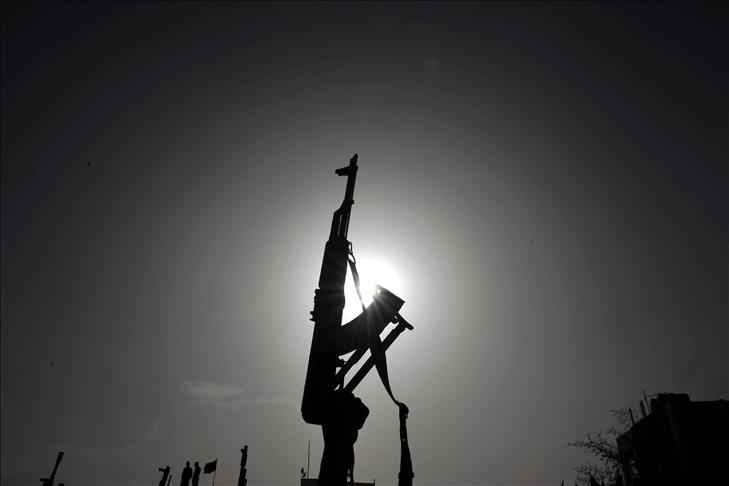
ANKARA
Regional tensions in the Middle East and an abundance of cash-rich states funded by natural resources is fuelling an arms race, security experts are claiming.
Recent research released by the Stockholm International Peace Research Institute has shown that 2014 saw a sharp increase in the number of countries with military burdens over 4 percent of GDP, with others funding defense expenditure of above 5 percent.
In its annual report, SIPRI reveals that 20 countries had military burdens over 4 percent of GDP in 2014 — of these, 10 had military burdens over 5 per cent.
Middle Eastern states are heavily over-represented, with nine of the 20 countries in the list – including the top two highest military expenditures globally last year (Saudi Arabia with $80.8 billion and the UAE with $22.8 billion) – representing a majority of the states in the region.
Natural resources driving military spending
"It is a contradiction when you look to the European countries. There is a decline in this rate among them," says Professor Kamer Kasim, vice president of the International Strategic Research Organization, an Ankara-based think tank.
Kasim says natural resources have driven military spending and arms imports in the Middle East.
"Nations in these regions have been building up their cash reserves thanks to high energy prices in the past. But they have been spending these resources largely on armament and defense systems," he claims.
Kasim said that today Saudi Arabia – one of the biggest spenders – perceives Iran as threat in the region.
"It was clear that the Yemen problem would come to this state. As long as conflicts and instability prevails in Yemen, Iraq and Syria, Gulf countries and Saudi Arabia feel the need to arm themselves in order to preserve their territorial integrity and defend themselves against sudden attacks. This situation does not seem as if it will change in near future.”
Regime survival leading to arms race
"There are many reasons why countries in the Middle East and Africa have increased spending, not all of which have to do with a fear of attack," says Sam Perlo-Freeman, a researcher at SIPRI’s Arms and Military Expenditure Programme.
"These can include a variety of actual and perceived security threats; for example, the unstable situation in the Middle East and North Africa following the Arab Spring and subsequent conflicts. This has created fears of these conflicts spilling over (as indeed they often have), as well as regional tensions such as between Saudi Arabia and Iran," Freeman adds.
Freeman claims that governments concerned with ensuring regime survival will try to have strong, loyal security forces which will put down any uprisings.
According to Freeman, another factor is the availability of vast oil revenues which provide an easy source of funding for military spending without taxing the population.
"Corruption and patronage may be another factor, for which the generally secretive military establishments can be an effective channel. But in general, it is rarely a fear of direct attack from other countries," he added.
Twenty countries had military burdens over 4 percent of GDP last year including: Oman, Saudi Arabia, South Sudan, Chad, Libya, Republic of Congo, Algeria, Israel, Angola, United Arab Emirates, Azerbaijan, Namibia, Russia, Lebanon, Myanmar, Armenia, Iraq, Bahrain, Yemen and Syria.
By way of comparison, only 13 countries had a military burden over 4 percent in 2005
SIPRI said that of the 20 countries, 11 were engaged in war or minor armed conflict as of 2013 or 2014.
There are seven African countries in the top 20, almost all of which have increased their military burden noticeably since 2005. Of the remaining countries, three – Armenia, Azerbaijan and Russia – are in Eastern Europe and one – Myanmar – is in Asia.
Anadolu Agency website contains only a portion of the news stories offered to subscribers in the AA News Broadcasting System (HAS), and in summarized form. Please contact us for subscription options.

